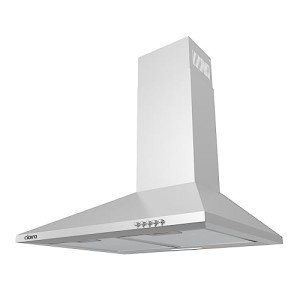This company has no active jobs
0 Review
Rate This Company ( No reviews yet )
About Us
20 Insightful Quotes About Kitchen Hood
Kitchen Hood Extractor Fan: An Essential Appliance for Modern Cooking
In the heart of every home lies the kitchen, a place where cooking creativity flourishes, and delicious scents permeate the air. However, with deliciousness typically comes the difficulty of smoke, grease, and unwanted smells. This is where the kitchen hood extractor fan enters play– a necessary home appliance designed to guarantee your cooking environment stays fresh and pleasurable.
What Is a Kitchen Hood Extractor Fan?
A kitchen hood extractor fan, also understood just as a range hood or cooker hood, is a gadget installed above the cooking location to aerate and cleanse the air. By removing airborne grease, smoke, steam, and smells, these fans not only boost indoor air quality but also prevent undesirable biological responses, such as mold growth or sticking around fragrances.

Kinds Of Kitchen Hood Extractor Fans
There are a number of kinds of kitchen hood extractor fans, each suited to various kitchen layouts and user requirements. Below is a contrast that highlights the most common types:
| Type | Description | Pros | Cons |
|---|---|---|---|
| Wall-Mounted Hoods | Set up versus a wall, usually above the stove. | Space-saving; modern visual. | Needs wall area; may restrict height. |
| Island Hoods | Suspended from the ceiling above an island cooktop. | Appealing; effective for open designs. | Setup intricacy; more pricey. |
| Under-Cabinet Hoods | Installed beneath kitchen cabinets, straight above the stove. | Less visible; blends into decor. | Restricted ventilation location. |
| Downdraft Hoods | Retractable vents that rise from the countertop. | Discreet; ideal for minimalist styles. | Less reliable suction; higher price. |
| Expert Hoods | Sturdy models used in industrial kitchens. | High extraction rates; durable. | Noisy; needs considerable installation space. |
Which Type is Right for You?
Picking the ideal kitchen hood extractor fan depends on several aspects:
- Kitchen Layout: Consider whether your stove is on a wall, island, or incorporated into a cabinet.
- Ventilation Needs: Evaluate how much cooking you do. If you often fry or grill foods, a more powerful extractor fan might be necessary.
- Aesthetic appeals: Depending on your kitchen style, you may prefer a modern look or something that mixes seamlessly with your kitchen cabinetry.
Benefits of Installing a Kitchen Hood Extractor Fan
The setup of a kitchen hood extractor fan provides many advantages:
-
Improved Air Quality: By getting rid of toxins, smells, and excess moisture, these fans assist keep a much healthier kitchen environment.
-
Defense of Surfaces: They prevent grease and smoke from deciding on cabinets, walls, and countertops, protecting the look and longevity of your kitchen fixtures.
-
Comfortable Cooking: A well-ventilated kitchen keeps the air cooler and more manageable, particularly throughout summer season months or when preparing multiple dishes.
-
Increased Property Value: Modern kitchens with quality devices add to the appeal and market worth of a home.
-
Compliance with Safety Standards: Proper ventilation reduces the danger of carbon monoxide build-up and fire dangers from grease buildup.
Setup Considerations
When purchasing a kitchen hood extractor fan, it’s crucial to consider the installation process. Here is a detailed summary:
-
Determine the Right Size: The hood needs to be broader than the cooking surface by at least 3 inches on each side.
-
Select Ducted or Ductless: Ducted hoods vent air outside, while ductless hoods filter air and recirculate it. Ductless is typically easier to set up.
-
Usage Professional Help: Although some might choose DIY installation, hiring a specialist can make sure proper setup and compliance with building regulations.
-
Select the Right Height: Install wall-mounted hoods 24-30 inches above the cooking surface area; island hoods must be 30-36 inches above.
Frequently Asked Question about Kitchen Hood Extractor Fans
Q1: How do I tidy my kitchen hood extractor fan?A: Regular cleansing is crucial for maintaining effectiveness. Detach the hood, eliminate filters, and tidy them using soap and warm water or a degreaser. Clean the exterior with moderate detergent. Q2: How frequently should I run my kitchen
hood extractor fan?A: It is recommended to run the fan while cooking and for an additional 10-15 minutes afterward to get rid of residual smells and moisture. Q3: What is the ideal CFM(Cubic Feet per Minute)for a kitchen hood?A: CFMs
depend on the cooking activity. A basic guideline is 100 CFM for every direct foot of cooking surface area. Heavy cooking might need 300 CFM or greater. Q4: Can I set up a kitchen hood myself?A: While DIY setup is possible, consulting an expert can make sure
compliance with safety regulations and expert-level setup. Q5: Are kitchen hood extractor fans noisy?A: Noise levels vary by model. Higher-end models often include noise-reducing functions. Think about looking at the sones
ranking when choosing a fan. Investing in a kitchen hood extractor fan is a smart choice for anyone looking to enhance their cooking experience while improving air quality and visual appeals. By comprehending the numerous types,
benefits, and setup factors to consider, house owners can make informed choices that line up with their specific needs. Whether cooking for family or hosting friends, a well-ventilated kitchen is crucial to keeping the cooking experience satisfying and gratifying.

